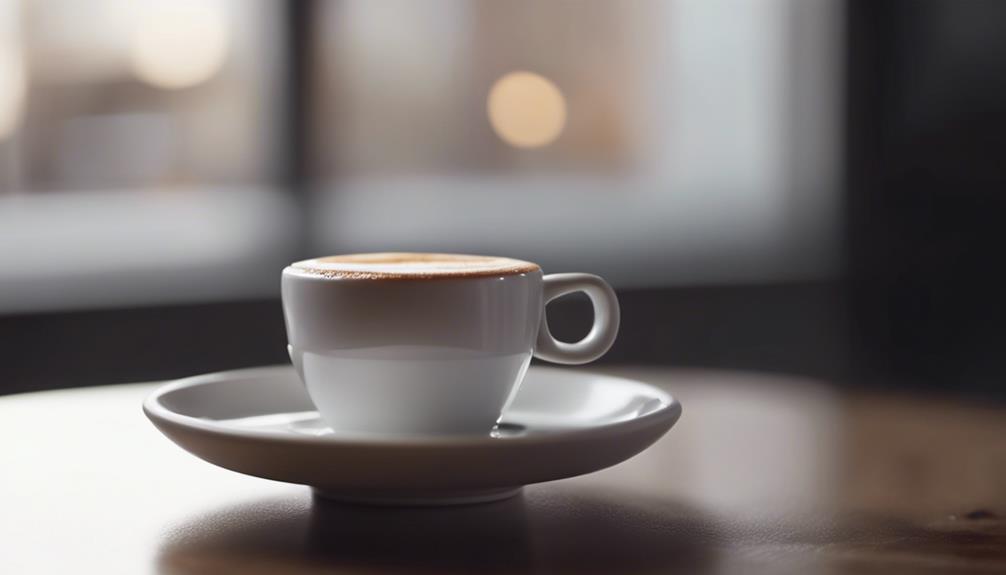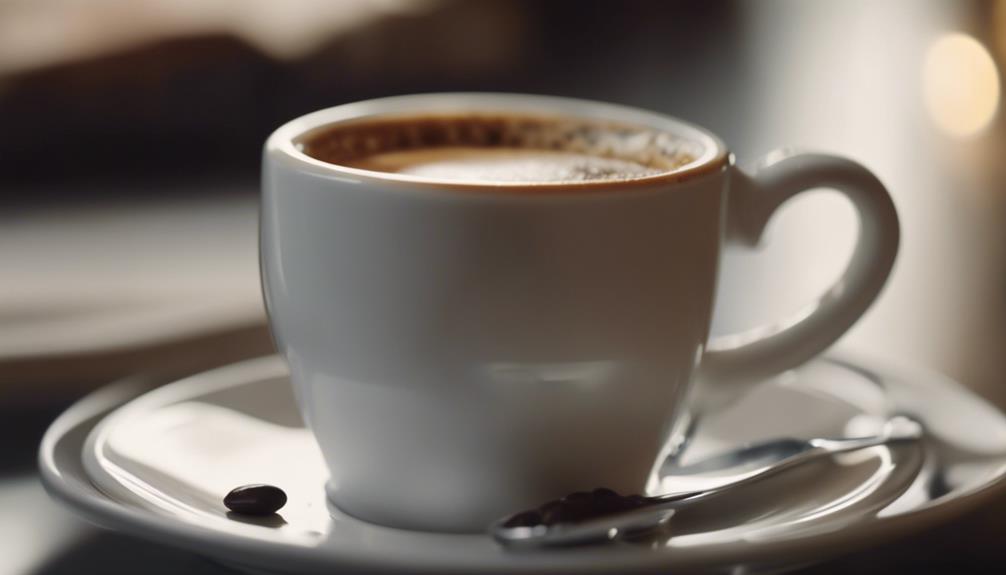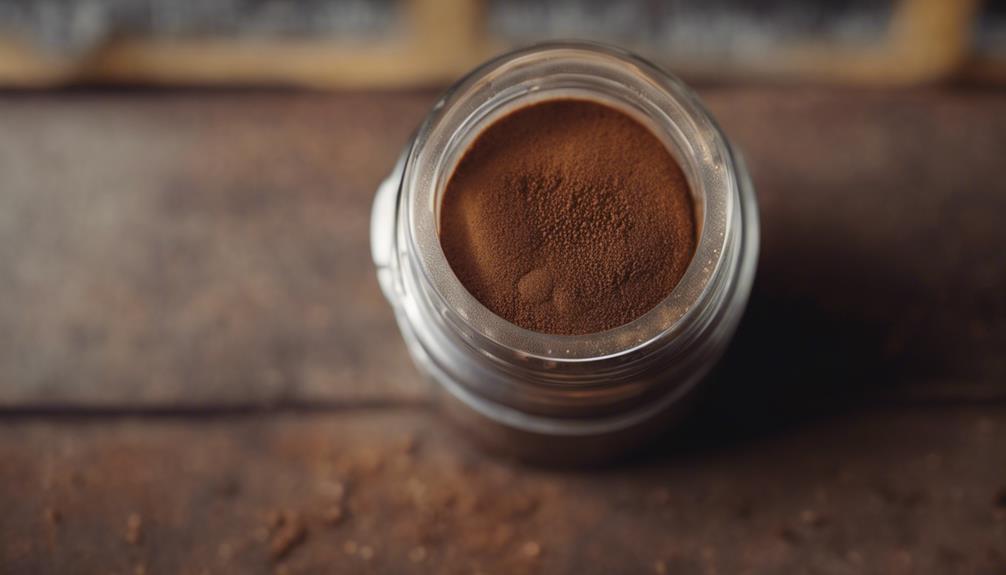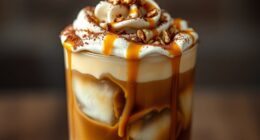Explore the benefits of espresso: it’s not just a caffeine boost. Packed with antioxidants, espresso helps reduce inflammation, enhance cognitive function, and protect against neurodegenerative diseases. Great for students and professionals, it improves memory, stimulates the brain, and helps prevent cognitive decline. Additionally, as a potent antioxidant, it fights oxidative stress, promotes heart health, and lowers the risk of chronic diseases. Espresso also serves as a mood enhancer, improves concentration, and helps combat mental fatigue. Uncover the wide range of benefits of espresso beyond its flavor and energy – a vital ally for your overall well-being.
Key Takeaways
- Espresso is rich in antioxidants, reducing oxidative stress and supporting heart health.
- Enhances cognitive function, improving memory, focus, and reducing cognitive decline risk.
- Boosts mood, concentration, and productivity, combating mental fatigue and enhancing overall well-being.
- Supports cardiovascular health by improving blood flow, reducing stroke risk, and combating inflammation.
- Packed with benefits like reducing chronic disease risk, enhancing blood vessel dilation, and protecting against neurodegenerative diseases.
Health Benefits of Espresso
Boost your health with the numerous benefits of espresso. Espresso is packed with antioxidants, which play an essential role in fighting off harmful free radicals in your body. By neutralizing these free radicals, espresso helps lower the risk of chronic diseases and reduces inflammation, promoting overall well-being.
Additionally, the caffeine in espresso can enhance your cognitive function. It aids in memorization, boosts information retention, and improves your ability to focus.
Moreover, regular consumption of espresso may have a protective role against neurodegenerative diseases like Alzheimer's. Studies suggest that those who enjoy espresso regularly have a lower risk of developing such conditions.
Additionally, the antioxidants in espresso shots contribute to heart health by enhancing blood vessel dilation and reducing the likelihood of cardiovascular issues.
Importantly, drinking espresso has also been linked to a decreased risk of type 2 diabetes, making it a wise choice for those looking to manage their blood sugar levels effectively.
Cognitive Boost
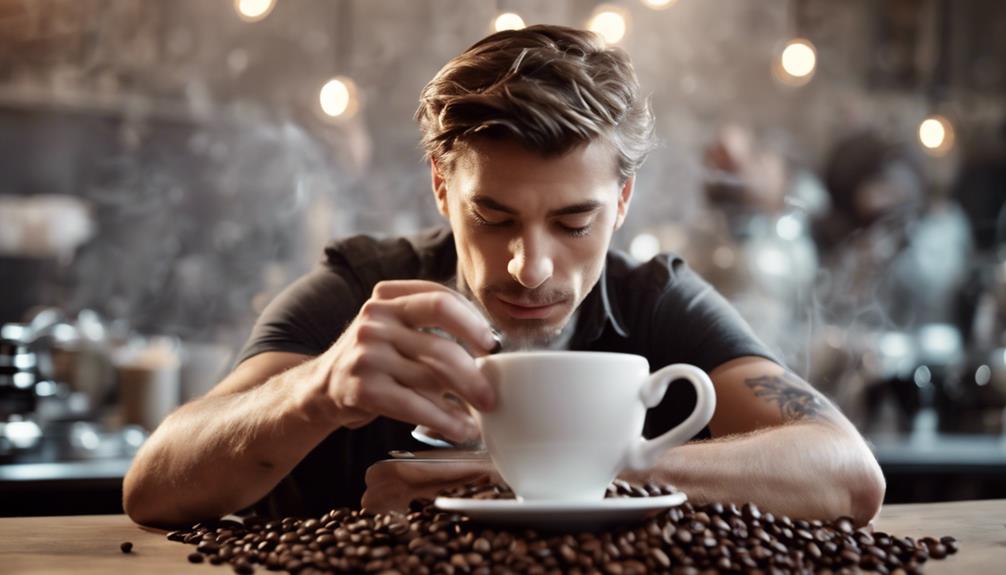
Enhance your cognitive function with the cognitive boost provided by espresso shots, known for enhancing memorization and information retention.
The caffeine in espresso can stimulate brain activity, improving focus, productivity, and mental clarity. By consuming espresso regularly, you may also benefit from a reduced risk of cognitive decline and neurodegenerative diseases.
The antioxidants present in espresso play an essential role in protecting your brain health. Studies have shown that individuals who drink 3-5 cups of espresso per day have a notably lower risk of developing Alzheimer's disease, by up to 65%.
This cognitive enhancement makes espresso an ideal choice for students, professionals, and anyone looking to boost their brainpower. So, whether you're studying for an exam or trying to stay sharp as you age, incorporating espresso into your routine could provide you with the cognitive edge you need.
Antioxidant Powerhouse

Espresso, a potent antioxidant powerhouse, extracts important antioxidants through its concentrated brewing process, essential for neutralizing free radicals in your body. These antioxidants play a critical role in reducing inflammation, potentially lowering the risk of chronic diseases. By combating oxidative stress, espresso provides a shield against cellular damage, promoting better overall health.
The antioxidants found in espresso, such as polyphenols and hydrocinnamic acids, contribute immensely to disease prevention and support a healthy lifestyle. Regularly enjoying espresso as part of your daily routine can provide a rich source of these beneficial compounds. By incorporating espresso into your diet, you're taking a proactive step towards improving your well-being and protecting your body from harm.
In addition to bolstering your body's defenses, espresso's antioxidant properties can also contribute to better blood flow and overall cardiovascular health. Embracing the antioxidant benefits of espresso can be a simple yet impactful way to support your body's health and vitality.
Mood and Concentration

Improving your mood and concentration, espresso offers a natural solution to boost your productivity and mental clarity. By increasing dopamine levels, espresso acts as a mood enhancer, helping combat feelings of exhaustion and promoting a positive mindset.
This enhancement in mood also translates into improved concentration, leading to enhanced productivity and mental clarity. For individuals dealing with depression, regular consumption of espresso can be beneficial in elevating overall mood and well-being.
The focus and cognitive performance boost provided by espresso make it an ideal choice for those seeking to stay alert and efficient throughout the day. Whether you're a student needing to concentrate on studies or a worker aiming to enhance productivity, espresso can help you maintain focus and combat mental fatigue.
Incorporating espresso into your routine may be a simple yet effective way to support your mood, concentration, and overall mental well-being.
Heart Health Boost
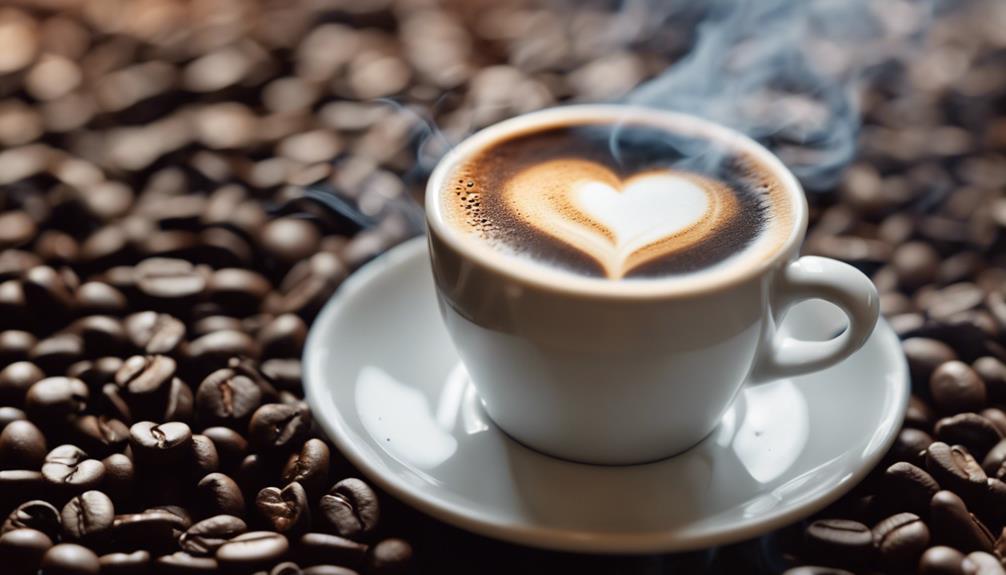
With potential benefits for your heart health, espresso is associated with a reduced risk of stroke and cardiovascular issues. Regular consumption of espresso can help improve blood flow by enhancing blood vessel dilation. The antioxidants found in espresso play an important role in supporting heart health by reducing inflammation and protecting against chronic diseases. By including espresso as part of your balanced diet, you may contribute to a healthier cardiovascular system.
The antioxidants present in espresso help combat inflammation, which is a key factor in maintaining heart health. Additionally, the improved blood flow resulting from espresso consumption can lower the risk of stroke and heart-related problems. Enjoying espresso as a part of your daily routine not only offers heart-healthy benefits but also supports your overall well-being.
Frequently Asked Questions
Why Is Espresso Good for You?
Espresso is good for you because it's packed with antioxidants that combat oxidative stress and inflammation. Regular consumption may lower the risk of cognitive decline and neurodegenerative diseases. The caffeine and antioxidants in espresso team up to protect your brain.
In moderation, espresso can reduce the chances of type 2 diabetes and liver disease. This concentrated coffee form contains beneficial compounds that support your overall well-being.
What Does Espresso Do to the Brain?
Espresso boosts blood flow to your brain, ramping up alertness and focus due to its potent caffeine levels. By blocking adenosine receptors, espresso helps maintain mental sharpness and stave off tiredness.
Regular consumption may reduce the risk of cognitive decline and neurodegenerative conditions. Those who enjoy 3-5 cups daily could see a significant 65% decrease in Alzheimer's risk.
Additionally, the antioxidants in espresso combat oxidative stress and inflammation, promoting brain health and cognitive function.
Why Does Espresso Give You Energy?
Espresso gives you energy by blocking adenosine receptors in the brain, preventing drowsiness. The caffeine in espresso boosts neurotransmitter release like dopamine and norepinephrine, enhancing alertness. Regular consumption improves focus, productivity, and mental clarity.
Its combination of caffeine and antioxidants offers sustained energy. This makes espresso a popular choice for a quick energy pick-me-up, providing a reliable source of energy throughout the day.
Why Does Espresso Help Digestion?
Espresso helps digestion due to its ability to promote peristalsis, the movement aiding food passage in the digestive system.
The anti-inflammatory properties within espresso can reduce bloating and soothe the digestive tract.
By stimulating the release of digestive enzymes, espresso assists in regulating the digestive cycle.
Consuming espresso in moderation can support healthy digestion and prevent digestive issues, creating a gut-friendly environment for overall wellness.
What are the specific benefits of espresso and why is it considered good for you?
There are 5 reasons espresso is good for you. First, it’s high in antioxidants which can boost your health. Second, it can improve mental alertness and focus. Third, it may help with weight management. Fourth, it can enhance physical performance. Finally, it may lower the risk of certain diseases.
How Does Espresso Provide Health Benefits?
Espresso consumption has been linked to several health benefits. The effects of espresso consumption, such as improved cognitive function, increased alertness, and potential protection against certain diseases, make it a popular choice for many individuals. The antioxidants and beneficial compounds found in espresso contribute to these positive health effects.
Conclusion
To sum up, espresso provides a variety of health benefits, from enhancing cognition and mood to supporting heart health. As the saying goes, 'a shot of espresso a day keeps the doctor away.'
So, the next time you go for your morning cup of coffee, consider choosing an espresso to fully experience its potential and enjoy its numerous advantages. Your mind, body, and taste buds will appreciate it.



